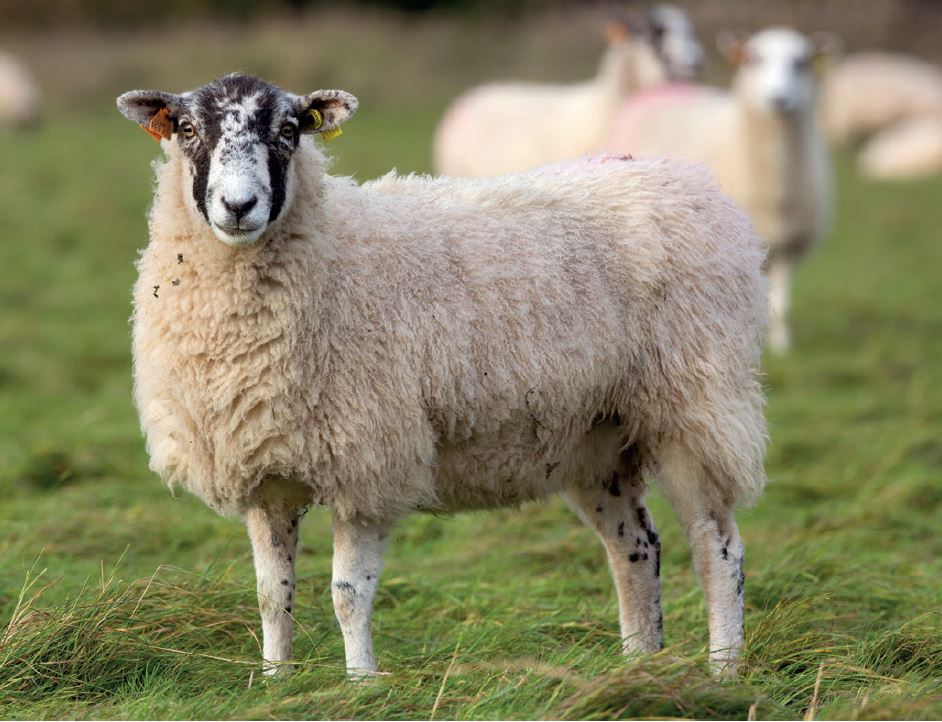How to optimise nutrition for lambing success

Maximising lamb survival is a key issue at this time of year on all UK sheep farms. Previous work has suggested that almost 50% of all lambing losses occur within the first 48 hours after birth, with around 60% of these loses being associated with nutrition.
The good grass growing season we had this year means there is plenty of preserved forage on farm, although quality may be variable. However, the recent wet weather conditions will be adding to the challenge as lambing approaches. Sheep will be utilising more energy for maintenance whilst feed intakes may be lower and grazing quality affected. This could have a massive effect on ewes at this key time when their nutritional demands are increasing as lambing fast approaches.
The last 6-weeks of pregnancy are some of the most nutritionally challenging times of the ewes’ year. During this period 70% of foetal growth occurs, this reduces internal space, consequently further reducing a ewes’ appetite by about 30%. In addition, during this final trimester the ewes’ udder is developing, colostrum is being produced and brown fat is laid down in the lamb.
Energy is one of the most important nutrients in the run up to lambing and is essential in helping to maintain body condition and support the ewes’ metabolic processes. The majority of energy at this time will come from grazing and forage so it is essential that a forage analysis be undertaken to determine any energy deficiencies and balance accordingly. Table 1 demonstrates the percentage energy contribution of different forage types as a proportion of a twin-bearing ewes’ diet at lambing time.

Table 1: Percentage energy contribution of different forage types for a 70kg twin-bearing ewe at lambing time
This table clearly demonstrates that where poorer quality forages are fed as lambing approaches, higher levels of supplementary concentrates will be required. However, in comparison, very good quality silage (+11.5 ME) will reduce the requirement for concentrate feeding so much that just a good quality protein such as soyabean meal may be sufficient.
Whatever forage being offered as lambing approaches Rumenco’s LIFELINE Lamb & Ewe product range is specifically formulated for feeding during the final 6 weeks of pregnancy. All products help support colostrum quality, an easier lambing and improved lamb vigour, helping to form an integrated approach for a profitable lambing season. Available as a feed block, bucket or protein meal, it is suitable for all types of feeding systems.

In addition to providing good levels of energy, LIFELINE Lamb & Ewe also includes natural, high quality by-pass protein which helps to meet the digestible undegradable protein (DUP) requirements of the ewe.
The LIFELINE Lamb & Ewe product range contains a good balance of minerals, vitamins and trace elements, including high levels of vitamin E, selenium and chelated zinc. These helps support the vitamin and mineral status of the ewe and lamb whilst also promoting a healthy lambing and encourage lamb vigour and survival. In addition, the inclusion of mannan oligosaccharides (MOS) and beta glucans support the ewe’s immune function to maximise nutrient partitioning into colostrum production.
The benefits of feeding LIFELINE Lamb & Ewe were proven in a study comparing LIFELINE Lamb & Ewe with a standard high-energy bucket. Ewes offered LIFELINE Lamb & Ewe demonstrated a 25% increase in the level of immunoglobulin (IgG) in the colostrum. IgG is responsible for the passive immunity passed onto lambs, and so colostrum that supplies lambs with a higher level of IgG will ultimately benefit lamb health and vigour.
Unfortunately, maximising profitability doesn’t end at lambing. During the early days of life, lamb feed efficiency is at its highest with it being estimated that for every 5kg of ewe’s milk consumed a lamb will gain 1kg of liveweight. But by weaning, it can take an extra 6kg of feed to gain that same 1kg of weight, costing an extra £3 in concentrates for a set of twin lambs

Rumeco’s Rumevite GrazeDUP feed block has been developed to help support ewe milk production after lambing and subsequent lamb growth rates. The inclusion of a high level of digestible undegradable protein (DUP) from rumen protected soya makes it the ideal complement to spring grass which contains predominantly rumen degradable protein so allows the modern ewe to realise her full potential. In addition, the blocks can completely replace trough feeding when sufficient fresh grass is available helping to minimise the stresses of mis-mothering, whilst also providing supplementary magnesium where spring grass staggers is a risk.
Independent studies carried out over two lambing seasons in association with SRUC have shown the benefits of offering Rumevite GrazeDUP blocks after lambing. When fed as a follow-on supplement to LIFELINE Lamb & Ewe, the combined effect of both products resulted in twin bearing ewes producing 8.4kg more lamb weight at weaning (each lamb was 4.2kg heavier at 12 weeks of age) compared to those receiving no supplementation.
To ensure ewes enter lambing in the best possible condition and continue to provide for their lambs during early lactation, whatever the weather, we would always recommend offering LIFELINE Lamb & Ewe from 4 to 6-weeks pre-lambing AND Rumevite GrazeDUP immediately after lambing and at turn out as a “follow-on” supplement.